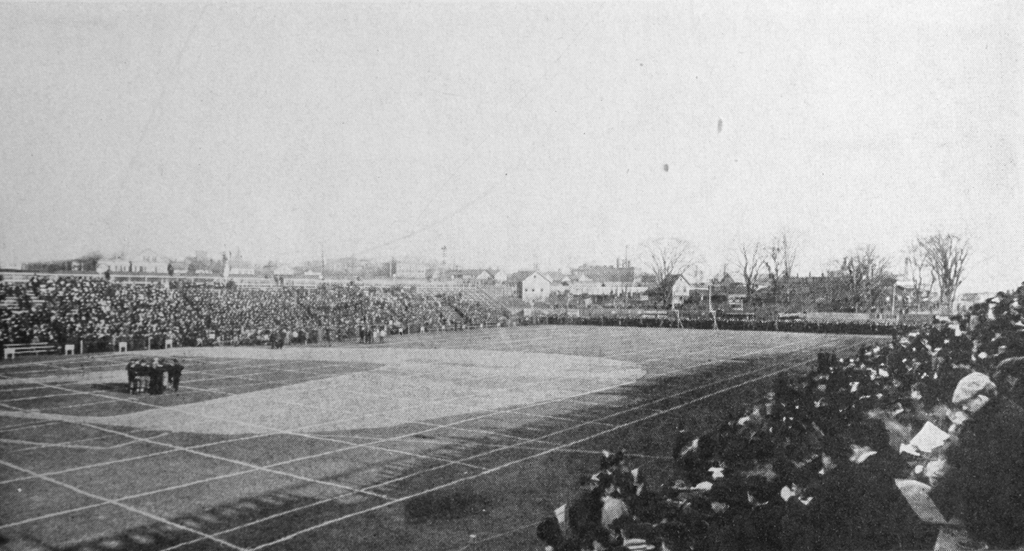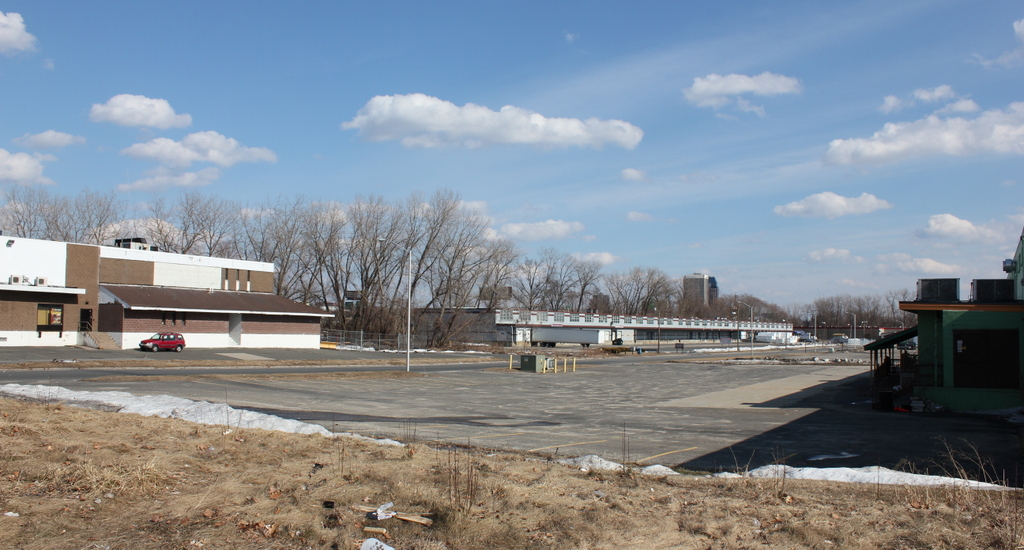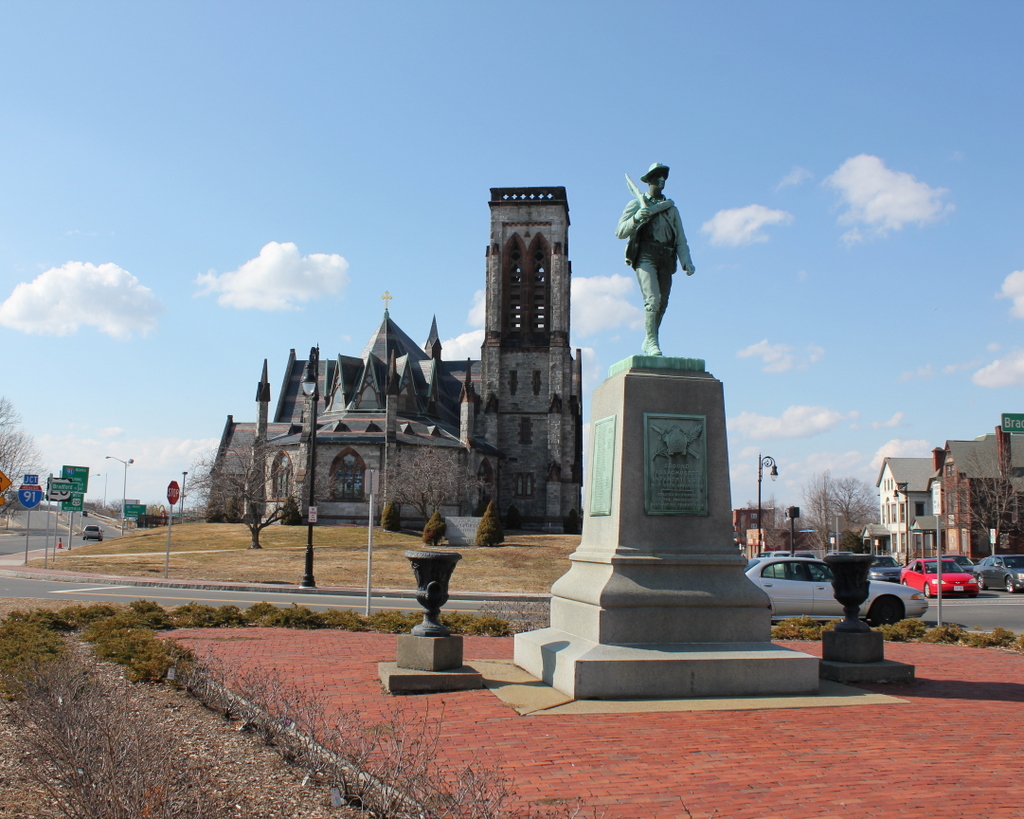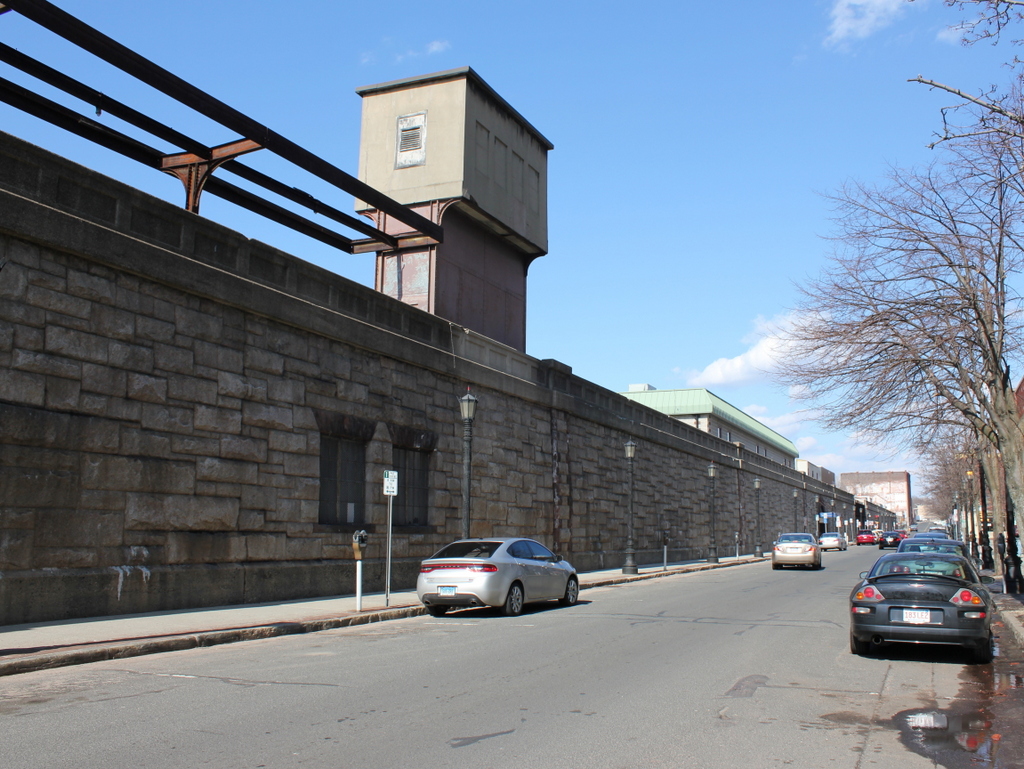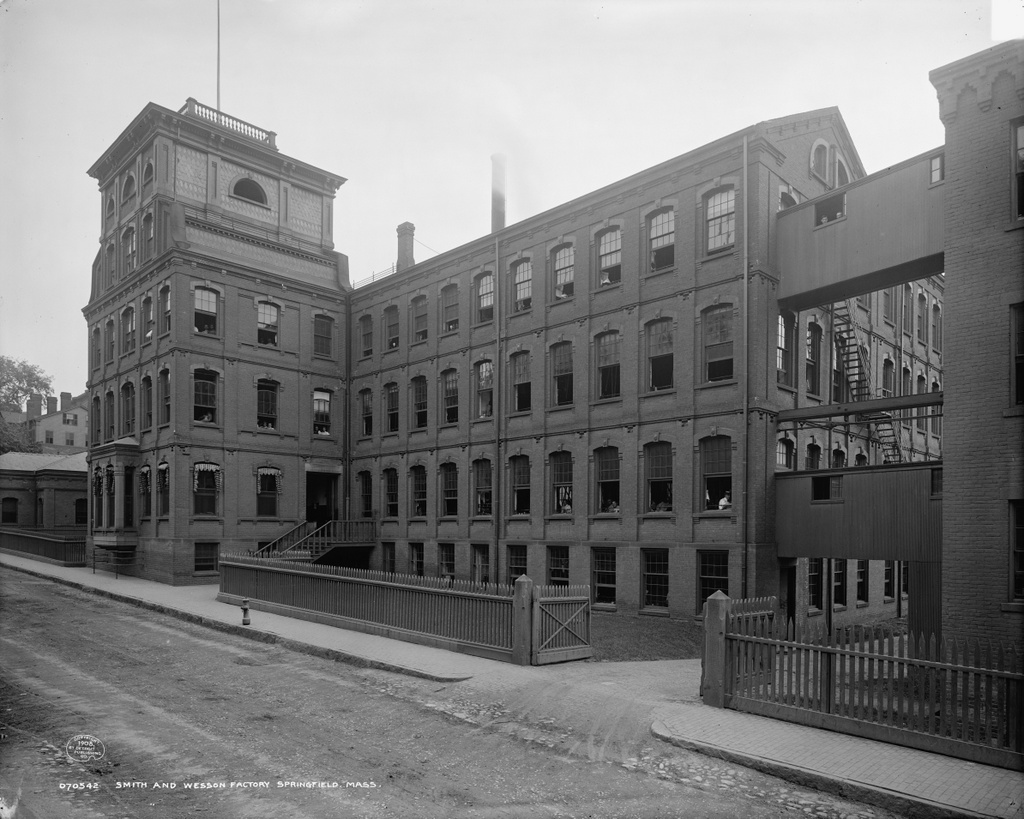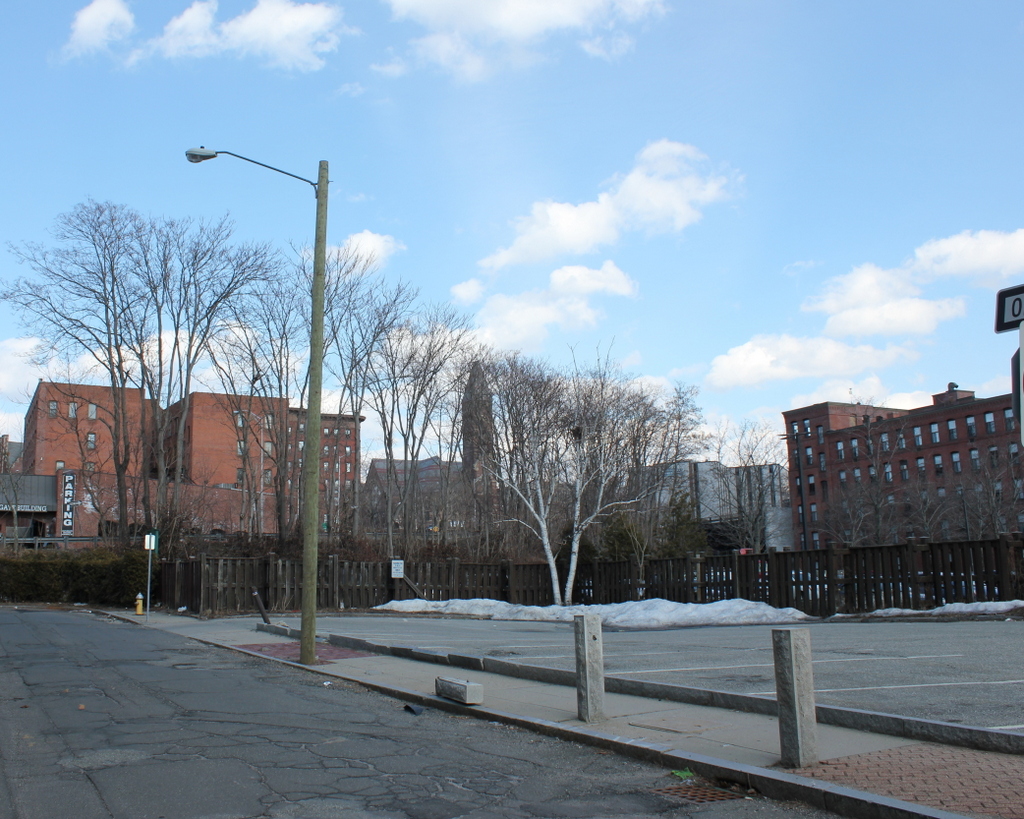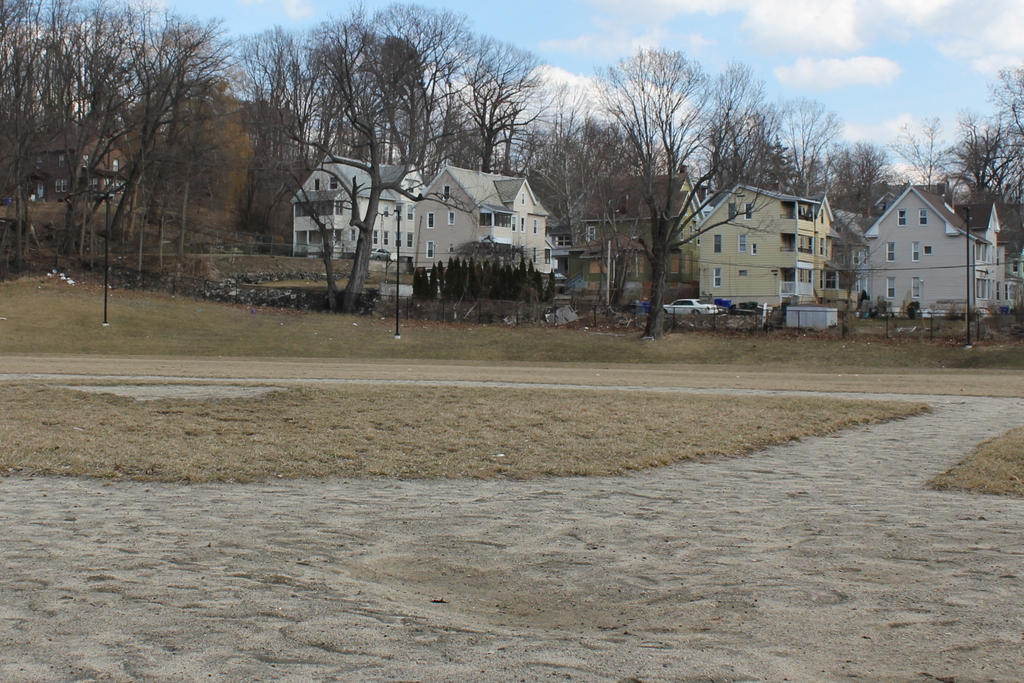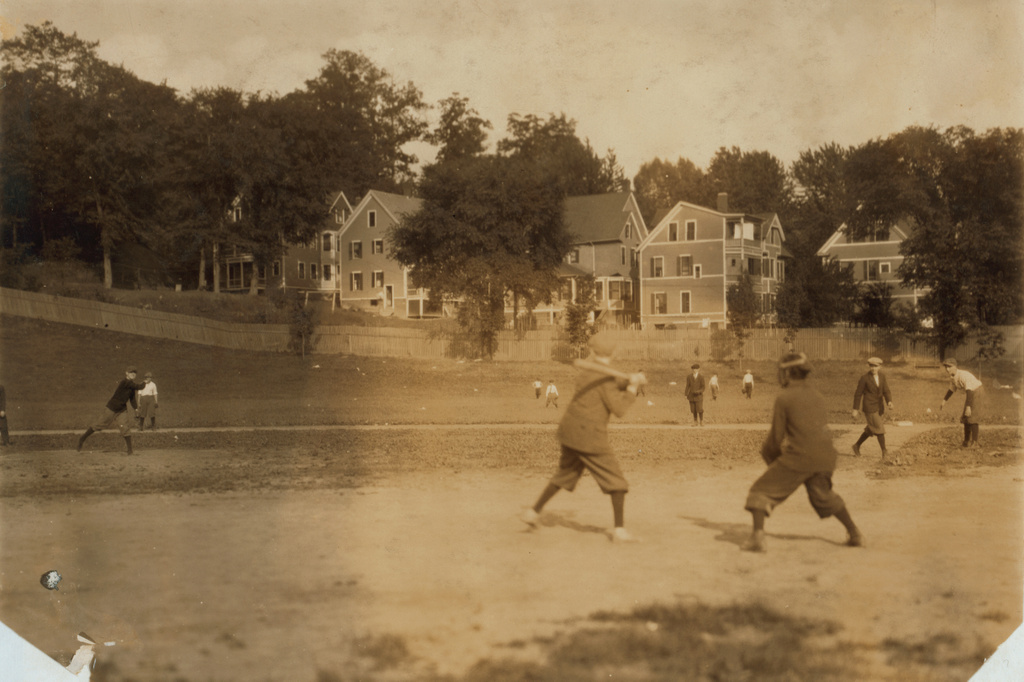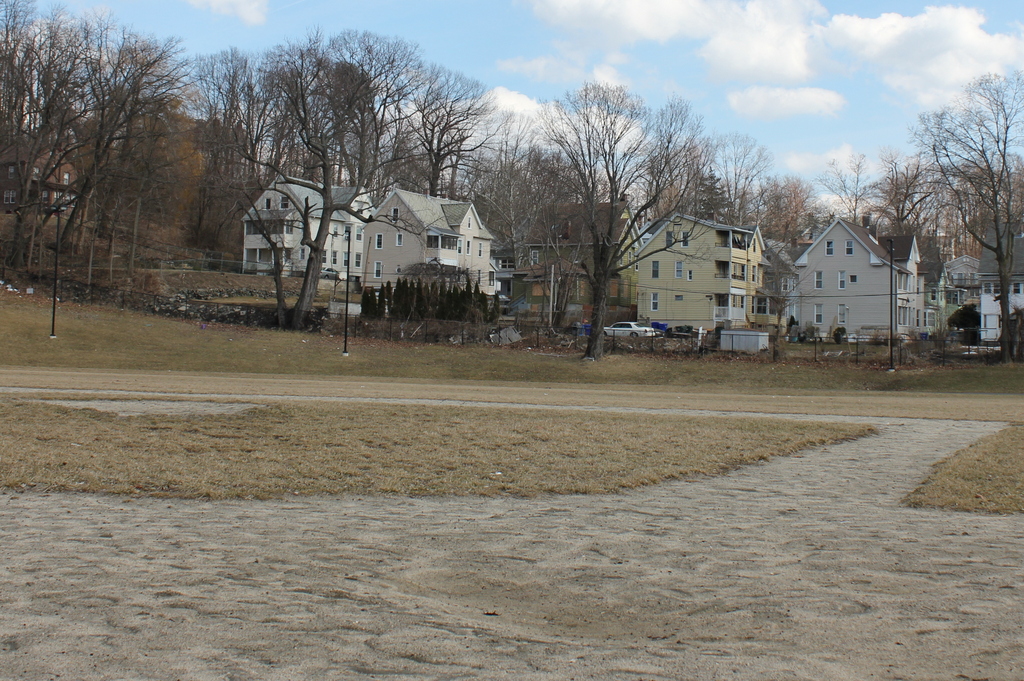Hampden Park in Springfield, Mass, during a football game, probably around 1905. Photo from Springfield: Present and Prospective, published in 1905.
The approximate scene in 2014:
First, a quick explanation: these two photos do not necessarily match up perfectly. They are both oriented in the same direction, but I don’t know whether this particular field was located here, or further south. The baseball diamond is visible in contemporary maps; an 1899 city map shows it further south, while a 1910 map shows it at approximately the location of the present-day photo. However, as I don’t know when the transition happened, I am left only to estimate when re-creating the 1905 photo.
In any case, Hampden Park (not to be confused with the major sports arena of the same name in Glasgow, Scotland) was used for a variety of athletic events for over a century. First opened in the 1850s, the site, bounded by the Connecticut River, the railroad tracks, and Plainfield/West Street (North End Bridge), was originally used for horse and bicycle racing. In 1861, it was used as the muster grounds for Civil War infantrymen, and later became a baseball field as well. It was here that in 1869, the Cincinnati Red Stockings, baseball’s first openly professional team, played against the Springfield Mutuals. Cincinnati won 80-5 en route to a perfect 65-0 season. A few years later, several National Association (the precursor to modern Major League Baseball) games were played here – first the short-lived Middletown Mansfields for a game in 1872, and later, for one game each year in 1873 and 1875, the Boston Red Stockings, now known as the Atlanta Braves, played at Hampden Park.
Later on, the park became home to a series of minor league baseball teams, with the location of the field changing several times. Most recently, it was located in the northwest corner of the lot, closest to the North End Bridge. Built in 1922 as the creatively-named League Park, it was renovated and renamed Pynchon Park in 1940. This field was home to minor league affiliates for the Cubs and later for the Giants; from 1950 through 1953, they were the Springfield Cubs, Chicago’s AAA affiliate. The last season of Springfield minor league baseball was in 1965, when the AA Springfield Giants played here; the next year, the team moved, and the park burned down. The present-day photo above was taken from around the left-field corner of the park, with the former location of home plate being being behind me, around where the Pride gas station and convenience store now stands.
In the first photo above, the field is configured for a football game, likely an Ivy League college game. From 1889 to 1894, the annual Harvard-Yale game was played here, as Springfield was a neutral site in between Cambridge and New Haven; after a particularly violent 1894 game, known as the “Hampden Park Blood Bath,” the game was suspended for two years, and the number of severe injuries called into question the future of the entire sport. Later on, in 1905 and 1906, Hampden Park hosted the Brown-Dartmouth game, and it is possible that the 1905 game might be the one in the above photo.

